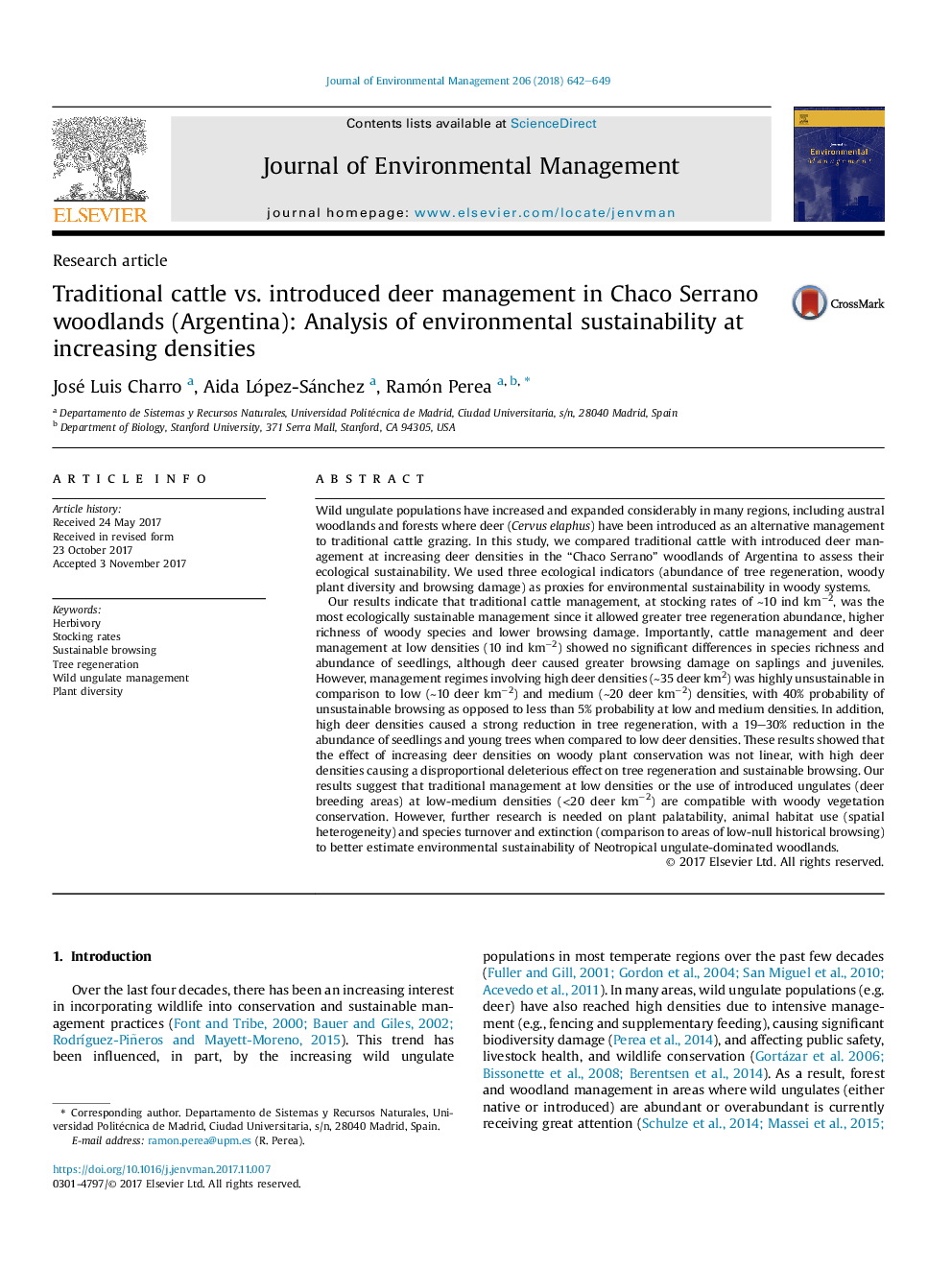| Article ID | Journal | Published Year | Pages | File Type |
|---|---|---|---|---|
| 7478812 | Journal of Environmental Management | 2018 | 8 Pages |
Abstract
Our results indicate that traditional cattle management, at stocking rates of â¼10 ind kmâ2, was the most ecologically sustainable management since it allowed greater tree regeneration abundance, higher richness of woody species and lower browsing damage. Importantly, cattle management and deer management at low densities (10 ind kmâ2) showed no significant differences in species richness and abundance of seedlings, although deer caused greater browsing damage on saplings and juveniles. However, management regimes involving high deer densities (â¼35 deer km2) was highly unsustainable in comparison to low (â¼10 deer kmâ2) and medium (â¼20 deer kmâ2) densities, with 40% probability of unsustainable browsing as opposed to less than 5% probability at low and medium densities. In addition, high deer densities caused a strong reduction in tree regeneration, with a 19-30% reduction in the abundance of seedlings and young trees when compared to low deer densities. These results showed that the effect of increasing deer densities on woody plant conservation was not linear, with high deer densities causing a disproportional deleterious effect on tree regeneration and sustainable browsing. Our results suggest that traditional management at low densities or the use of introduced ungulates (deer breeding areas) at low-medium densities (<20 deer kmâ2) are compatible with woody vegetation conservation. However, further research is needed on plant palatability, animal habitat use (spatial heterogeneity) and species turnover and extinction (comparison to areas of low-null historical browsing) to better estimate environmental sustainability of Neotropical ungulate-dominated woodlands.
Related Topics
Physical Sciences and Engineering
Energy
Renewable Energy, Sustainability and the Environment
Authors
José Luis Charro, Aida López-Sánchez, Ramón Perea,
